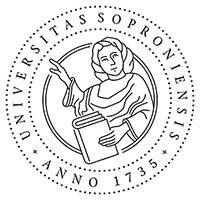Gestures in Music
Abstract
Music can be classified according to several points of view: with or without text, vocal or instrumental, programme music or absolute music … and it may be considered in many other ways although any definition is much less than what music can give to the recipient. A not very well-known point of view is finding gestures in kindergarten and school songs, pieces for listening and, generally, papular compositions. Theoretical introduction is illustrated with some examples from Gregorian chant. folk music and classical music.
“Expression of meaning takes place namely by words in seven per cent only while quality and components of voice, stress, intonation, melody determine meaning of message in 38 per cent and non-verbal information as mimicking, gestures and posture in 55 per cent.” (Bagdy, Pap, 2011)
References
Bach, Joh. Seb. (1975): Matthäus Passion. Edition Peters, Leipzig.
Bagdy Emőke, Pap János (2011): Ma még nem nevettem. Kulcslyuk Kiadó, h. n.
Béres György (1999): Gregorián ének III. Gregorián Társaság, Budapest.
Döbrössy János szerk. (2011): „Mi ez a gyönyörű” – zenehallgatóvá nevelés – konferenciakötet. ELTE TÓK Tudományos Bizottsága, Budapest.
Farkas Ferenc (1999): Missa secunda in honorem Sanctae Margaritae. Andreaas Farkas, Pully, Suisse.
Lindeisz Ferenc szerk. (2005): Kulcs a graduáléhoz. Szent István Társulat, Budapest.
Újfalussy József (1980): Zenéről, Esztétikáról – cikkek, tanulmányok. Zeneműkiadó, Budapest.
Várnai Péter (1972): Oratóriumok könyve. Zeneműkiadó, Budapest.
Downloads
Published
Issue
Section
License
Copyright (c) 2012 Kismartony Katalin

This work is licensed under a Creative Commons Attribution-NonCommercial-NoDerivatives 4.0 International License.








